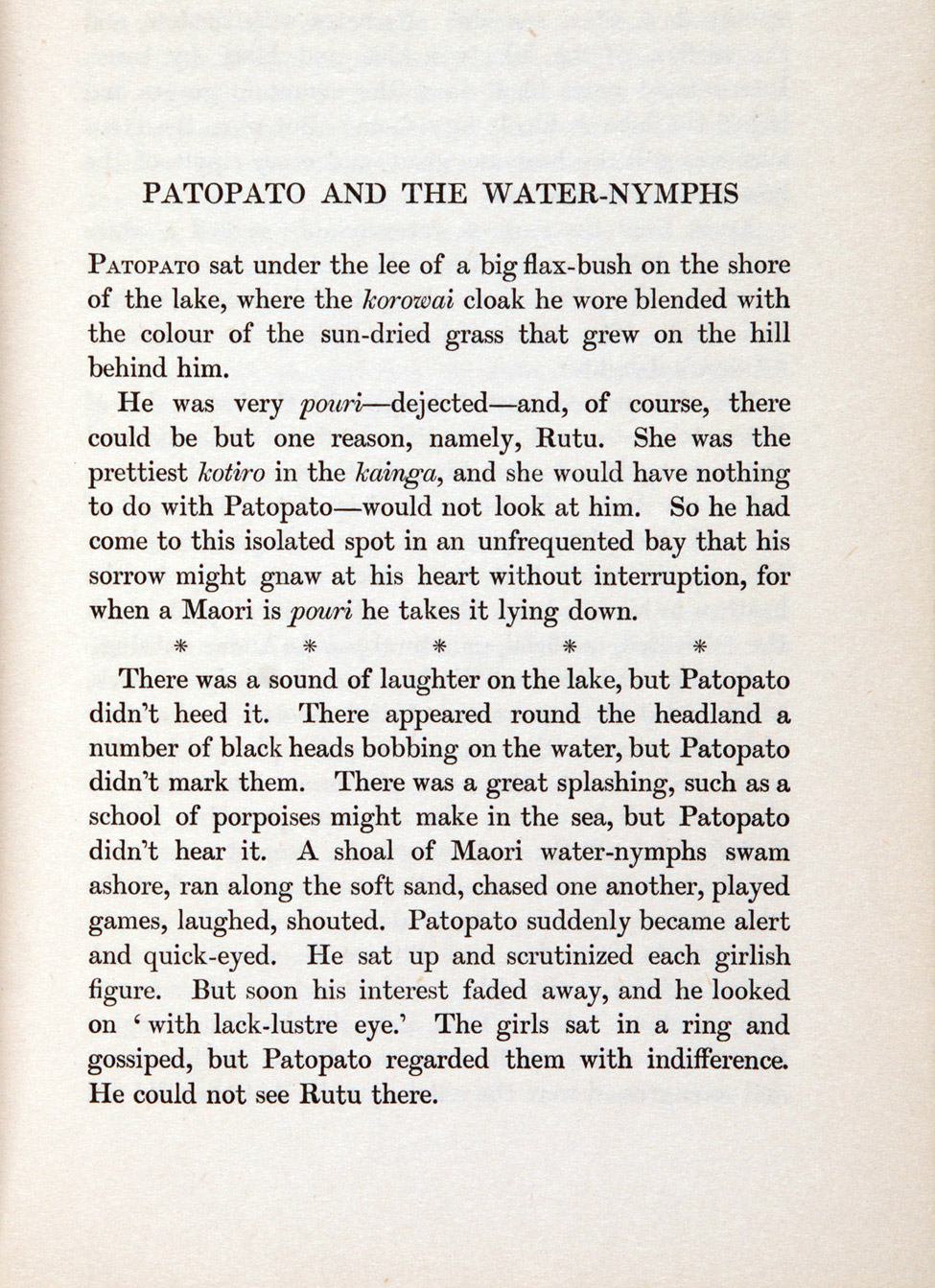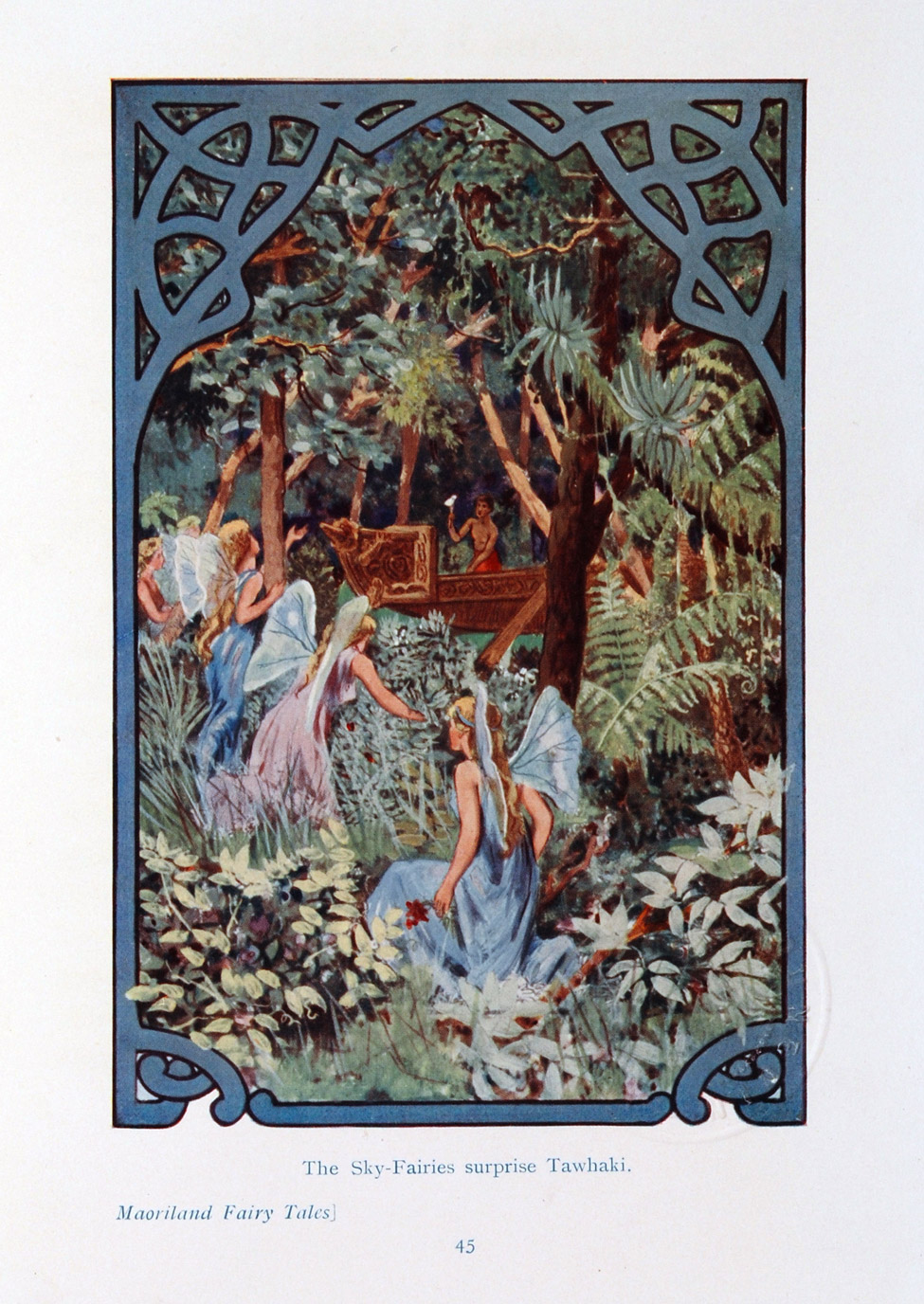
A.A. Grace. Tales of a Dying Race. London: Chatto & Windus, 1901.
Here we show two examples of a romantic Edwardian view of Māori mythology. In Tales of a Dying Race, Grace portrays the Māori as a race in decline:
‘. . . it is the sad belief of those who know the race best, that the Maoris (sic) are doomed to be extinguished or absorbed’ (p vii).
The volume contains both pre-contact and post-contact stories, many of them presented in a rather nostalgic manner.

